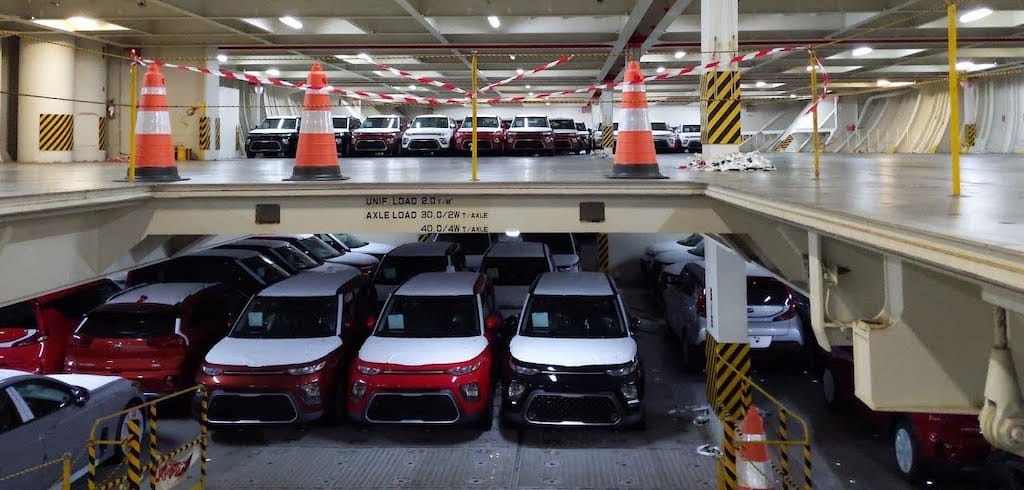
The process of loading and unloading a vehicle onto a shipping vessel can seem daunting, but with the right preparation and guidance, it can be a smooth and stress-free experience. Whether you are shipping a vehicle for a move or for a military deployment, understanding the process of loading and unloading can help you better plan for the shipping of your vehicle by sea.
Preparing Your Vehicle For Transport
Before loading your vehicle onto a shipping vessel, you will need to prepare it for transport. This may involve removing any personal items, making sure the fuel tank is not full, and ensuring that the vehicle is roadworthy. You may also need to drain any fluids and disconnect the battery to meet shipping regulations.
Once your vehicle is ready for transport, you will need to deliver it to the port where it will be loaded onto the vessel. Depending on the location of the port and the distance from your home, you may be able to drive your vehicle to the port or you may need to hire a professional to transport it. You will also need to provide documentation, such as a bill of lading, a certificate of title, and a certificate of insurance, to the shipping company.
The actual loading process will depend on the type of vessel and the size and weight of your vehicle. Some vessels have specialised equipment, such as cranes or car carriers, to load and unload vehicles, while others may require the use of ramps or other manual methods. Your vehicle may be loaded onto the vessel either on its own wheels or onto a specialised platform or trailer.
Roll On Roll Off (RORO)
RORO, or roll-on roll-off, shipping is a method of transporting vehicles, such as cars, trucks, and buses, by sea. RORO vessels are specially designed to carry wheeled cargo that can be driven on and off the vessel, rather than being loaded and unloaded using cranes or other specialised equipment.
One of the main advantages of RORO shipping is that it is generally faster and more cost-effective than other methods of shipping vehicles by sea, such as container shipping. RORO vessels have a larger capacity for vehicles and can load and unload cargo more efficiently, making them well-suited for shipping large volumes of vehicles.

RORO vessels are equipped with ramps or other access points that allow vehicles to be driven on and off the vessel. Once on board, the vehicles are secured using straps, chains, or other restraints to prevent them from shifting during transport. Some RORO vessels also have specialised decking or racks to accommodate different types of vehicles.
RORO shipping is typically used for transporting vehicles that are in running condition, but it can also be used to ship vehicles that are not in running condition as long as they can be safely loaded and unloaded.
RORO shipping is a common method of transporting vehicles between countries, but it is also used for transporting vehicles within a country, such as for domestic moves or for moving vehicles between islands.
In addition to vehicles, RORO vessels can also carry other types of wheeled cargo, such as construction equipment, agricultural machinery, and military vehicles.
Overall, RORO shipping is a convenient and cost-effective way to transport vehicles by sea, and it is widely used for shipping vehicles both domestically and internationally.
Unloading The Vehicle
Once your vehicle is securely loaded onto the vessel, it will be transported to the destination port, where it will be unloaded. The unloading process is similar to the loading process, with the use of specialised equipment or manual methods depending on the vessel and the size and weight of the vehicle.
It is important to note that the loading and unloading process can be physically demanding and may require some lifting and manoeuvring of the vehicle. It is a good idea to have someone available to assist you with the process if necessary, and to follow any safety guidelines provided by the shipping company.
After your vehicle has been unloaded, you will need to pick it up from the port and complete any necessary paperwork or customs clearance procedures. You may also need to pay any applicable fees or duties before you can take possession of your vehicle.
Overall, the process of loading and unloading a vehicle onto a shipping vessel may seem complex, but with proper preparation and the guidance of a reputable shipping company, it can be a smooth and efficient way to transport your vehicle by sea.
By understanding the process and planning ahead, you can ensure that your vehicle arrives at its destination safely and on time.





